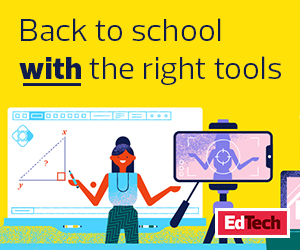What Remote Learning Infrastructure Do Schools Need to Have?
Parent satisfaction with K–12 education fell 10 percent this year from a record high 82 percent in 2019 as uncertainty takes the place of familiarity with school processes, procedures and potential closures. Meanwhile, according to a recent Rand report, 85 percent of teachers are now putting greater emphasis on preparation for future school shutdowns.
To ensure these transitions are as painless as possible, schools must shore up technology infrastructure in three key areas:
- Secure cloud hosting services — According to Randy LaBonte, CEO of the Canadian eLearning Network, “Over the past decade there has been a shift to robust and secure networks available for post-secondary and K–12 schools to license space on annually.” Here, the challenge isn’t so much choice as effective conversion from on-site to off-premises solutions — schools are often best-served by keeping IT staff focused on immediate student needs and finding trusted cloud migration partners to help make the switch.
- Improved network access — “The pandemic has exposed a lot of the equity issues and gaps when it comes to access to, and use of, technology,” says LaBonte. “While governments have remained focused on getting devices to students, building the infrastructure for adequate access to connect online with enough bandwidth remain challenges. In short, while the infrastructure is improving, remote connection for many students remains inequitable and a challenge regardless of the robustness of the infrastructure in place.”
- Enhanced data privacy — LaBonte puts it simply: “Student privacy is a key concern, and schools are required to ensure every student’s data is protected.” He says that can restrict the use of many online tools because private information is required in creating accounts and there is little to no control where the data is stored. To address this issue, schools must first identify where security frameworks are vulnerable, then implement access and authentication controls that allow end-to-end management of student data.
DISCOVER: Learn how to protect data in a shifting security landscape.
Support the Long-Term Success of Remote Learning
Just as many organizations have made work-from-home positions permanent for staff who want them, remote learning isn’t a temporary tactic. From parents opting out of in-person schooling until vaccines are available to students staying home because of minor coughs or fevers — even if they’re not COVID-related — the need for robust online access remains.
LaBonte says, however, that “while the pandemic era has seen substantial amounts of money put into technology, infrastructure and tools for students, the critical question is, ‘Will this type of investment be successful in shifting learning online, and will it be sustained in post-pandemic times?’”
In other words, funding alone isn’t enough to drive long-term remote learning success. It’s not just how much money schools receive, but how they spend it that matters — as noted by LaBonte. “Most classroom-based teachers had at best a few weeks of experience and relied mainly on live online teaching using web conferencing platforms such as Zoom, Microsoft Teams or Google Meet which often limit active engagement of learners,” he says.
READ MORE: These new Google Meet and Microsoft Teams features make remote learning more engaging.
Meanwhile, 58 percent of teachers say they need “strategies or resources to address the loss of students’ opportunities to engage in hands-on learning,” according to the Rand report. To ensure online instruction engages learners both immediately and over time, infrastructure spending must be paired with a solid strategy to ensure students and staff get the support they need.
School is back in session, but there’s nothing certain about the new semester. From sudden COVID flare-ups to parent preferences and public health orders, the constant in education is change.
As a result, physical health and safety isn’t the only passing mark — K–12 schools must also ensure they’re identifying, developing and supporting the IT infrastructure building blocks they need to make the grade.
MORE ON EDTECH: How can schools improve remote learning experiences?











